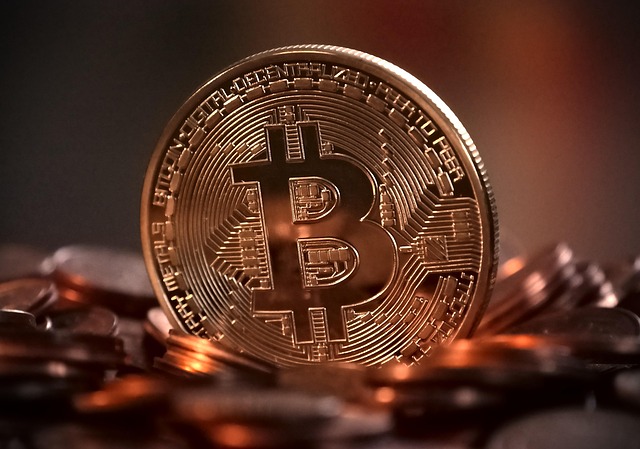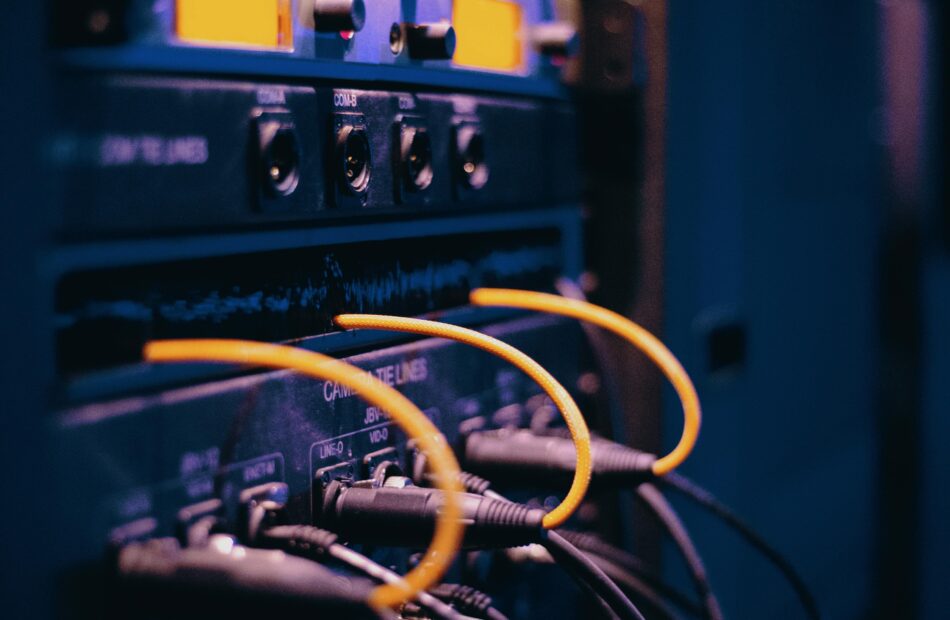Bitcoin spikes to 7-week highs as analyst doubts chances of $100K rebound
Key points:Bitcoin is witnessing a tussle between buy and sell volume as BTC/USD hits its highest levels since the start of March.BTC price action is making traders increasingly wary due to the pace of recent gains.$100,000 is likely to remain out of reach for the short term, multiple commentators say.Bitcoin (BTC) headed into key resistance after the April 25 Wall Street open as doubts over the BTC price breakout persisted.BTC/USD 1-hour chart. Source: Cointelegraph/TradingViewBitcoin sellers and buyers battle for controlData from Cointelegraph Markets Pro and TradingView showed BTC/USD hitting new seven-week highs above $95,000.Having preserved its yearly open at $93,500 as intraday support, Bitcoin went on to liquidate leveraged shorts as $100,000 came closer.The latest data from monitoring resource CoinGlass shows progress in taking upside liquidity across exchange order books.BTC liquidation heatmap. Source: CoinGlassReacting, popular trader Daan Crypto Trades underscored the importance of the current price range in the context of the Bitcoin bull market.“Trading back above the Bull Market Support band as we speak,” he wrote in an X post, referring to a cluster of moving averages lost as support earlier in 2025.“A weekly close above this level would be a good look for the larger timeframe and I’d expect new highs at some point as long as it holds above.”BTC/USDT 1-week chart. Source: Daan Crypto Trades/XOthers were cautious, with fellow trader Skew revealing a tug-of-war between a large-volume buyer and seller.“Price would be a lot lower than it is now without the passive buyer matching this market selling,” he warned alongside an order book print.“Eventually one will throw in the towel & volatility will follow through.”BTC/USDT 1-minute chart with liquidity data. Source: Skew/XWaiting on a $100,000 BTC price “catalyst”Continuing, Keith Alan, cofounder of trading resource Material Indicators, likewise doubted whether BTC/USD could sustain a trip above $95,000.Related: Bitcoin exchange outflows mimic 2023 as whales buy retail ‘panic’Alan noted declining volume as price moved higher, repeated wicks below the yearly open and a “down” signal on one of Material Indicators’ proprietary trading tools.“For me, a pump above $95k would invalidate the new signal, but I’d probably consider such a move to be a short squeeze unless we have a catalyst with some substance behind it,” he summarized.BTC/USD 1-day chart. Source: Material Indicators/XMacroeconomic perspectives also favored a period of consolidation before BTC/USD returned to six figures.In its latest bulletin to Telegram channel subscribers, trading firm QCP Capital argued that Bitcoin lacked a $100,000 “catalyst.”“Given the pace of the recent rally, we remain tactically cautious,” it wrote. “Positioning has become more crowded, which could lead to sharper reactions around key levels. Market participants appear to be watching closely for signs of continuation or exhaustion.”This article does not contain investment advice or recommendations. Every investment and trading move involves risk, and readers should conduct their own research when making a decision.
Federal Reserve withdraws crypto guidance for banks
The US Federal Reserve has announced it would withdraw guidance for banks engaging in crypto asset and stablecoin-related activities.”The Board is rescinding its 2022 supervisory letter establishing an expectation that state member banks provide advance notification of planned or current crypto-asset activities,” the Board of Governors of the Federal Reserve explained in an April 24 statement.Any crypto-related activities will now be monitored through the Federal Reserve’s normal supervisory process, it said.The Federal Reserve is also rescinding its 2023 supervisory letter that impacted how state banks could engage in stablecoin activities.This is a developing story, and further information will be added as it becomes available.
Bitcoin exchange outflows mimic 2023 as whales buy retail 'panic'
Key points:Bitcoin exchange 100-day average netflows are at their most negative since the start of the current bull market in 2023.Exchange balances continue to plumb new multiyear lows.Whales are particularly active buyers this month, while retail shows classic “panic selling.”Bitcoin (BTC) exchanges are evoking the end of the 2022 crypto bear market as user inflows dry up this year.Data from onchain analytics platform CryptoQuant reveals exchanges’ average net flows hitting two-year records.Bitcoin analysis eyes “reaccumulation of assets”Bitcoin may be trading significantly higher than at the start of 2023, but demand for BTC among exchange users is reminiscent of the start of a bull market.CryptoQuant reveals that the 100-day simple moving average (SMA) of exchange net flows recently hit its most negative figure in two years.“This essentially indicates the highest Bitcoin outflow from exchanges since that date,” contributor CryptoOnChain commented in one of its “Quicktake” blog posts on April 23. “A review of historical patterns suggests that this could imply re-accumulation of assets by investors.”Bitcoin exchange netflow 100-day SMA. Source: CryptoQuantA negative net flow tally indicates outflows from exchange surpassing inflows, reflecting more user demand than a desire to send BTC to exchange accounts for a potential sale.As Cointelegraph reported, overall exchange BTC balances are at their lowest in many years.CryptoQuant shows reserves hitting 2.535 million BTC in early April, down over 7% from 2.740 million BTC at the start of the year.Bitcoin exchange reserve. Source: CryptoQuantWhales buy while retail exitsElsewhere, larger Bitcoin entities have added to their portion of the supply throughout April, even as smaller retail investors sell.Related: Bitcoin ETF inflows top 500 times 2025 average in ‘significant deviation’“Whales (1k-10k balance) have been accumulating hard since March, even as price slid,” crypto analyst Miles Deutscher noted on X this week alongside CryptoQuant data. “Every time prices drop, whales accumulate into retail panic selling.”Bitcoin 1K BTC+ balance data. Source: Miles Deutscher/XResearch firm Santiment drew similar conclusions about entities holding at least 10 BTC, which it referred to as “key stakeholders.”“Bitcoin’s key stakeholders comprised of wallets holding between 10 & 10K BTC currently hold 67.77% of the entire supply of crypto’s top market cap asset,” an X post reported. “During the April volatility, these wallets continue to accumulate, and have now added over 53.6K BTC since March 22nd.”Bitcoin 10 BTC+ balance data. Source: Santiment/XThis article does not contain investment advice or recommendations. Every investment and trading move involves risk, and readers should conduct their own research when making a decision.
US prosecutors file over 200 victim statements in Celsius ex-CEO’s case
US federal prosecutors have filed statements from hundreds of victims in their case against Alex Mashinsky, the founder and former CEO of the defunct crypto lender Celsius Network.The recently sworn-in interim US Attorney for Manhattan, Jay Clayton, said in an April 23 letter to a Manhattan federal court that he was sharing “more than 200 victim impact statements” collected by his office.The statements span 418 pages of Celsius users, some named and some only using their initials, detailing the impact that the collapse of the firm had on their lives and how much money they had lost as a result. Some of the statements detailed victims who said they entrusted their life savings to Celsius, believing Mashinsky’s assurances that the platform was safe.Others wrote they were dismayed at the amount returned to them as a result of the company’s bankruptcy proceedings, which many said was less than the amount they put into the platform.An excerpt of a statement by Jesse Gaarenstroom detailing their losses and dissatisfaction with the repayments made to Celsius creditors. Source: CourtListenerBefore it collapsed, Celsius Network allowed users to deposit crypto to earn yield and offered loans with crypto posted as collateral. It blocked withdrawals in mid-2022 amid a massive crypto market crash and filed for bankruptcy in July that year.The Justice Department hit Mashinsky with seven charges a year later in July 2023, but he took a plea deal and copped to a count each of commodities and securities fraud in December, which carry a maximum sentence of 30 years in prison if served consecutively.Some seek leniency for MashinskyA large number of the statements reviewed by Cointelegraph called for Mashinsky to be imprisoned under the maximum allowable sentence, but at least two called for the court to go easy on the admitted fraudster.Related: US prosecutors to pursue ex-SafeMoon CEO case despite DOJ memoOne statement, written by a person identifying themselves as “Mike,” said further punishing Mashinsky would be “unreasonably excessive” as he claimed, without evidence, that the Celsius founder “was the target of a coordinated attack” by Sam Bankman-Fried, a convicted fraudster and former CEO of the collapsed crypto exchange FTX.Another statement written by Artur Abreu said that Mashinsky should be given leniency as he’s shown remorse, and macroeconomic factors at the time majorly contributed to Celsius’ collapse.Mashinsky, whose sentencing is set for May 8, argued in an April 17 sentencing brief that he should not be sentenced to more than a year and one day in prison, or 366 days, as he had “genuinely good intentions, and a previously spotless track record.”The government’s sentencing brief is due on April 24.Magazine: Inner City Press says ‘less flashy’ Mashinsky set for less jail time than SBF: X Hall of Flame
Coinbase to hire 130+ staff as it expands into Charlotte’s fintech hub
Crypto exchange giant Coinbase is set to expand its footprint by hiring over 130 employees in Charlotte, North Carolina, as part of a broader push to tap into emerging fintech talent pools across the US, a company spokesperson confirmed to Cointelegraph.“Coinbase is making a new investment in Charlotte with a new physical office and an immediate commitment to hire for 130+ local roles across both Compliance and Customer Support over the next six months,” the spokesperson said.They added that Coinbase’s focus on Charlotte is in response to the city’s emergence as a key financial and tech center, making it a prime choice for expansion to address increasing customer and compliance demands.With a fast-growing population and a highly skilled talent pool, Charlotte offers an ideal setting to support Coinbase’s long-term growth, the spokesperson said.Related: Coinbase Derivatives lists XRP futuresCoinbase remains a remote-first companyCoinbase has operated as a remote-first company since 2020, with existing offices in San Francisco and New York.“We are still a remote-first company; however, we have some roles globally that are in office due to the nature of the role and our focus on how we can best deliver for our customers,” the spokesperson said.They added that around 95% of Coinbase’s employees have the option to work from home, an office, or a mix. The bigger picture here is we’re making an intentional push to meet top talent where they are.Related: Paul Atkins’ loosely linked RSR token rises 13% after Coinbase listingThe move comes as Coinbase CEO Brian Armstrong outlined plans to add about 1,000 new US employees this year, driven by favorable regulatory signals from President Donald Trump’s pro-crypto administration.“Coinbase is planning to hire about 1,000 people in the United States this year as a direct result of his actions already in the first 60 days or so,” Armstrong said in a video posted to X on March 7.Armstrong revealing hiring intentions outside the White House. Source: Brian ArmstrongAdding 1,000 more employees would increase Coinbase’s total workforce by about 27%, according to Stockanalysis’ most recent data, which shows that the crypto exchange currently has 3,772 employees.The new expansion plans also come as Coinbase has confirmed that it is considering applying for a US federal bank charter.Magazine: Former Love Island star’s tips on how to go viral in crypto: Van00sa, X Hall of Flame
Cantor plans $3B crypto venture with SoftBank, Bitfinex and Tether: Report
Brandon Lutnick, chair of investment banking firm Cantor Fitzgerald, is reportedly partnering with SoftBank, Tether and Bitfinex to create a $3 billion crypto acquisition company.Lutnick and the consortium hope to create a publicly listed crypto acquisition company to capitalize on the market under crypto-friendly US President Donald Trump, and replicate Michael Saylor’s company Strategy, the Financial Times reported on April 23, citing three people who have been briefed on the plan.Cantor Equity Partners raised $200 million in January for the new firm called 21 Capital. At the same time, stablecoin issuer Tether will fork out $1.5 billion in Bitcoin (BTC), Japanese investment holding firm Softbank Group will contribute $900 million, and the crypto exchange Bitfinex will add $600 million.Lutnick’s new venture hopes to raise another $350 million in convertible bonds and a separate $200 million private equity placement to buy additional Bitcoin.Eventually, Tether, Bitfinex, and SoftBank’s Bitcoin investments will be converted into 21 Capital shares, with the value of the Bitcoin locked in at $85,000 per coin and shares costing $10 a pop.However, the deal hasn’t been finalized yet, and some details could change before it’s officially announced. Brandon Lutnick was named chair of Cantor Fitzgerald when his father, Howard Lutnick, stepped down to become the US Secretary of Commerce.Brandon Lutnick was named chair of Cantor Fitzgerald when his father, Howard Lutnick (right), became the US Secretary of Commerce. Source: White HouseCantor Fitzgerald, SoftBank, Tether and Bitfinex didn’t immediately respond to Cointelegraph’s request for comment.Cantor already well versed in crypto market Cantor Fitzgerald has managed Tether’s Treasury portfolio and $134 billion of reserves, mainly in US Treasury bills, since 2021. The firm also owns a 5% stake in the stablecoin issuer.Previously, Cantor acted in an advisory role for Tether’s $775 million investment in YouTube alternative Rumble in December last year.Related: Commerce Secretary Lutnick walks back tariff relief on electronicsMeanwhile, on March 11, Cantor Fitzgerald said it was rolling out a Bitcoin financing business with $2 billion in initial capital to help institutional investors borrow against their crypto holdings. Anchorage Digital and Copper were selected as Bitcoin custodians and collateral managers.Cantor Fitzgerald currently holds over $5 billion worth of assets across 275 total holdings, according to Fintel data.Magazine: XRP win leaves Ripple and industry with no crypto legal precedent set
Crypto crime goes industrial as gangs launch coins, launder billions — UN
Organized crime groups across Southeast Asia have scaled their operations by exploiting cryptocurrency and launching their own coins, exchanges and blockchain networks to launder billions of dollars, according to a new report from the United Nations Office on Drugs and Crime (UNODC).The report said criminal syndicates are no longer just using existing crypto infrastructure. Instead, they are actively building tailored financial ecosystems to evade detection.One example cited in the report is the Chinese-language ecosystem and marketplace known as Huione Guarantee, now rebranded as Haowang, which has processed more than $24 billion in crypto linked to fraud over the past four years.Value of crypto funds received by Huione Guarantee continues to rise. Source: UNODCHeadquartered in Phnom Penh, Cambodia, the platform has grown to more than 970,000 users and thousands of interconnected vendors.“Concerningly, Huione has recently launched a range of its own cryptocurrency-related products, including a cryptocurrency exchange and trading application, online gambling platform, blockchain network, and US dollar-backed stablecoin designed to circumvent government controls,” the report stated.Related: CFTC partners up to warn on crypto pig butchering scamsSoutheast Asia emerges as crypto crime hubThe UNODC warned that scam centers in Myanmar, Cambodia and Laos have industrialized cybercrime, combining blockchain, artificial intelligence and stablecoins to fuel operations.These centers run complex fraud schemes, including phishing, investment scams and “pig butchering,” generating billions annually, per the report. Some of the largest pig butchering syndicates are reportedly clustered around the region, according to Cointelegraph Magazine.Over the past year, several raids have led to the arrests of hundreds of people, including Chinese, Filipino, Indonesian, Malaysian, Thai and Vietnamese nationals found at suspected cyber-enabled fraud operations.In October 2024, Hong Kong police busted a scam center and arrested 27 people they accused of using AI deepfakes to carry out a crypto romance investment scam that defrauded victims of more than $46 million.Likewise, in December 2024, Nigeria’s anti-corruption agency arrested 792 people in a raid on a building in the country’s largest city that it claimed was a hub for a massive crypto romance scam operation.Locations of reported scam centers in Mekong. Source: UNODCRelated: Coinbase users hit by $46M in suspected phishing scamsCustom stablecoins and exchanges evade oversightThe UN report highlights that syndicates are issuing their own stablecoins and creating private exchanges to bypass global financial regulations, which allows criminals to move funds seamlessly across borders without relying on mainstream platforms subject to Anti-Money Laundering controls.Huione Guarantee has launched a suite of crypto-related products, which also includes a cryptocurrency exchange, a blockchain network (Xone Chain) and an online gambling platform. The group also announced the launch of a Huione Visa card in February 2025.While Southeast Asia remains the epicenter, UNODC noted that these crypto-fueled operations are expanding into Africa, South America and the Pacific.“The growing global impact of expanding Asian money laundering and underground banking networks cannot be understated,” the report stated, urging governments to close loopholes.Magazine: SEC’s U-turn on crypto leaves key questions unanswered
A guide to crypto trading bots: Analyzing strategies and performance
The cryptocurrency market has witnessed a surge in the adoption of automated trading solutions, with trading bots gaining prominence for their ability to analyze vast data sets and execute trades with precision.Cointelegraph has dissected historical bot revenues and token price rollercoasters and backtested strategy returns against the buy-and-hold yardstick to decode what bots shine brightest — and when — so you can pick the perfect bot to match your style and stomach for risk.We have examined three types of trading bots: Telegram bots trading on decentralized exchanges (DEX), non-Telegram bots trading on DEXs and on centralized exchanges (CEXs), and the recently evolving AI agent bots.Choosing the right trading bot depends on the user’s goals, risk tolerance and experience. At a glance:Telegram bots are ideal for fast, opportunistic trading like token launches and memecoins.AI agent bots, such as ai16z or Virtuals, suit users who want hands-off automation and are comfortable with experimental strategies.CEX bots offer the most control and are best for structured strategies like dollar-cost averaging (DCA), grid or signal-based trading.Bot trading strategies and performanceTrading bots are sophisticated automated systems that use algorithms to analyze cryptocurrency market data and autonomously execute trades on centralized exchanges or decentralized platforms. These bots typically operate continuously, 24 hours a day, seven days a week, requiring minimal human oversight. Their core function involves the analysis of extensive amounts of real-time and historical market data, including price fluctuations, trading volumes and order book information. There are numerous potential advantages to employing AI agent trading bots. Their continuous operation ensures that no trading opportunities are missed, as they can monitor markets around the clock, accommodating global market movements. Some platforms offering these bots also provide backtesting capabilities, enabling users to evaluate the potential effectiveness of different trading strategies using historical data before deploying them with real capital.Telegram DEX bots Telegram bots operate via Telegram, leveraging its accessibility and real-time communication to execute trades directly on DEXs. They often focus on speed and sniping new tokens, appealing to users in fast-moving ecosystems like Solana. The recently launched protocols also included additional features that are often available in CEX trading bots, such as grid trading, DCA and limit orders.Telegram bots such as Maestro and Unibot first appeared around 2020–2021. In 2022, many of these bots were already offering advanced features like copy trading and arbitrage.By the end of 2023, Solana-based bots like BONKBot and Trojan Bot gained prominence for their speed in trading memecoins on DEXs. The biggest advantage of Telegram bots is their ability to trade on mobile devices without the need for a web browser extension to connect to a wallet. It hugely improves the usability of mobile trading, monitoring and integration with social networks.The top five Telegram bots by historical trading volume across all blockchains are Trojan, BonkBot, Maestro, Banana Gun and Sol Trading Bot. The majority of the trading volumes in the past 90 days happened on Solana, where all of the top five Telegram bots operate.DEX trading bot wars. Source: Dune AnalyticsThe functionalities offered by the Telegram bots are very similar, with the exception that some of them (i.e., Maestro and Banana Gun) focus on multichain operations, whereas the rest focus on Solana.The main use case for Telegram bots is to automatically identify profitable entry and exit points and execute trades quickly; it’s very difficult to track the profits or losses made by individual users from each trade. Since some of the Telegram bots, such as Banana Gun and BonkBot, offer a revenue-sharing model tied to their own tokens in the form of purchasing back their tokens with the 1% fee they charge, the token price and revenue (fees received) are used as an approximation of the performance of Telegram bots.Daily revenue in USD among Telegram bots. Source: Dune DashboardDaily revenue out of total revenue. Source: Dune DashboardLooking at the total revenue in the past six months, Trojan has received the most nominal amount in fees (around $109 million), whereas Sol Trading Bot has the highest median daily revenue when normalizing the daily revenue in terms of the total revenue.They all saw a peak around January 2025 during the memecoin season but are now facing a low-revenue period due to the broader bearish market conditions.Daily token price percentage change. Source: Dune AnalyticsThe two Telegram bots that share revenue through their tokens are Banana Gun and BonkBot. Looking at the price evolution in the past six months, the performance of the remaining parts is very similar, except for the significant rise in BONK’s price in November 2024. They both experienced significant price drops during the recent bearish market conditions.Related: The whale, the hack and the psychological earthquake that hit HEXAI agent bots AI agent trading bots are sophisticated automated systems that leverage artificial intelligence and machine learning (ML) algorithms to analyze cryptocurrency market data and autonomously execute trades.The term “agent” suggests these bots possess a degree of independence and decision-making capability that extends beyond the fixed rules of traditional automated trading systems. The most well-known AI agent frameworks that exist today are Virtuals and ai16z.Virtuals Protocol, launched in October 2024 on the Ethereum layer-2 network Base, is an AI agent generator platform designed to simplify the creation and deployment of AI agents on the blockchain. While Virtuals is not solely focused on trading, the platform enables the development of AI agents that could potentially be designed for trading purposes. For instance, Aixbt, an experimental AI agent on the platform, tracks discussions on X to identify potential market insights, suggesting a strategy that could inform trading decisions.Since Virtuals Protocol focuses on a launchpad model where agents are tokenized individually (e.g., LUNA and AIXBT) and operate across different areas such as gaming, trading and entertainment, we’ll only look into the performance of AIXBT, the token of the trading agent with the largest market capitalization on Virtuals.AIXBT price history. Source: CoinMarketCapAi16z is an AI-powered trading fund operating on the Solana blockchain. Launched in October 2024, ai16z utilizes sophisticated AI agents, powered by the Eliza framework, to autonomously analyze market data, including price movements, social media sentiment and onchain analytics, and execute trades.The fund functions as an AI investment decentralized autonomous organization (DAO), allowing holders of its native token to participate in governance by voting on key decisions and influencing trading strategies through a “virtual marketplace of trust.” AI Marc, a virtual fund manager built using the Eliza framework, oversees the fund’s trading activities. AI16Z tokens represent ownership in the fund and grant governance rights, with the agent’s actions driving token value. AI16Z price history. Source: CoinMarketCapComparing the trading volumes from these two agents, they both reached a peak in January 2025, with AI16Z reaching $501 million and AIXBT reaching $682 million. AI16Z’s price hit its peak slightly earlier than its volume high, whereas for AIXBT, the price and volume peaks coincided around the same time.AI16Z and AIXBT price and volume comparison. Source: CoinMarketCapAIXBT’s price performance is more impressive than AI16Z. At the peak, the token price was almost 4,000x the initial price in November 2024, whereas for AI16Z, this was around 111x. Even after the recent downturn and the broader market trending down, the latest price record at the end of March 2025 is still 478x the initial price for AIXBT and 6.8x for AI16Z.DEX/CEX bots These platforms are web-based and operate outside Telegram. You can trade directly on DEXs through wallet connection or connect to a CEX via APIs or a simple login option as part of their integrated exchange solutions.These web-based platforms offer a wide range of strategies and broader market access; they cater to users preferring both CEX liquidity and reliability as well as DEX’s decentralized, non-custodial nature. Some of these platforms also offer a quick switch between DEX and CEX with one click, making the discovery of price discrepancies between CEX and DEX (or CEX-DEX arbitrage) much easier.The most common strategies available on these platforms are grid, DCA and signal bot. A DCA bot invests a fixed amount of money into a cryptocurrency at regular intervals — regardless of the asset’s price. The idea is to spread out your entry points over time, which helps reduce the impact of market volatility. This type of strategy tends to perform well during price-trending periods.A grid bot is built for active trading — buying low and selling high in a structured way to profit from price fluctuations. A grid bot places a series of buy and sell limit orders at preset intervals above and below a set price range. This creates a “grid” of orders, and the bot profits from each completed buy-low/sell-high cycle. Grid bot works best in sideways markets with high volatility.A signal bot executes trades based on external signals — these usually come from technical indicators, market analysis or third-party services. These signals can be relative strength index (RSI), exponential moving averages (EMA), Bollinger Bands, etc.The following table shows the historical performance for the token pairs BTC/USDT, ETH/USDT and SOL/USDT for the three trading strategies. The parameter selection for the grid bot utilizes the 3Commas AI optimization built-in functionality to select the best parameters, whereas for DCA, the most popular classic trading strategy from their users is selected. For the signal bot, Dash2Trade provides strategy presets where the top strategy for each token is selected. These strategies are backtested on a proprietary system used to trade on live markets but are only available for the 120 days before Jan. 26, 2025.Due to a lack of consistent availability of data on the platforms, three backtesting periods were used for each of the three strategies. The table below shows the simple price change during the corresponding period, which is also the return for the simple benchmark buy-and-hold strategy.The available data suggests that performance can vary widely based on the specific bot, the trading strategy employed and the prevailing market conditions at the time the backtests were run. BTC and ETH price. Source: CoinMarketCapDuring the 120-day period from Sept. 26, 2024, to Jan. 26, 2025, when the signal bots were backtested, the market prices for Bitcoin (BTC), Ether (ETH) and Solana (SOL) were all upward trending with a buy-and-hold return of 58%, 23% and 55%, respectively. The signal bots’ strategies were performing in line with the buy-and-hold strategy (in some cases slightly worse) for BTC (58.15%), ETH (16.79%) and SOL (48.68%). Comparing the same 120-day period but from Dec. 4, 2024, to April 4, 2025, when grid bots were backtested, the market prices for BTC, ETH and SOL were all experiencing a downward trend, with a buy-and-hold return of -16%, -53% and -49%, respectively, which is completely different from the previous 120-day backtesting period. The grid bots’ strategies were performing much better than the buy-and-hold strategy during the downward-trending, high-volatility market conditions, giving positive returns for BTC (9.6%), ETH (10.4%) and SOL (21.88%).BTC and SOL price. Source: CoinMarketCapFor the longest 180-day backtesting period from Oct. 4, 2024, to April 4, 2025, when the DCA bots were backtested, the buy-and-hold returns for BTC, ETH and SOL were 34%, -25% and -18%, respectively. The signal bots’ strategies were performing very differently for the three tokens compared to the buy-and-hold strategy. For BTC, a 17.75% return is generated from the DCA bots, which is worse than the buy-and-hold strategy. However, for ETH (58.12%) and SOL (80.92%), the DCA returns are much better than the buy-and-hold returns. This might be due to the fact that ETH and SOL experienced much higher volatility during the period compared to BTC, and the DCA strategy was able to spread out entry prices to reduce exposure to bad timing.Related: Market maker deals are quietly killing crypto projectsTrading bot performance comparisonTelegram DEX bots like Trojan and Sol Trading Bot dominated in revenue over the past six months, with Trojan earning about $109 million in fees. Sol Trading Bot stood out for consistent daily earnings relative to its size.However, all bots saw revenue peak during the January 2025 memecoin hype and have since slowed due to bearish market sentiment. Token-linked bots (BANANA, BONK) followed a similar pattern — brief surges (notably BONK in November 2024) followed by steep drops tied to broader market trends.AI agent bots showed explosive growth during the same period. AIXBT reached a peak price 4,000x its initial value, far outperforming AI16Z (111x). Even post-correction, AIXBT held strong at 478x vs. AI16Z’s 6.8x. Volume-wise, both peaked in January 2025, but AIXBT’s token price closely tracked its volume rise, suggesting strong speculative momentum.CEX/DEX signals, grid and DCA bots showed the importance of market conditions, and the performance results vary quite a lot compared to the buy-and-hold strategy.Signal bots performed close to the buy-and-hold strategy during the uptrend market condition (backtesting period September 2024–January 2025), with marginally lower or similar returns.Grid bots excelled during a downtrend and high volatility environment (backtesting period December 2024–April 2025), beating the buy-and-hold strategy by wide margins, flipping negative market returns into double-digit gains.DCA bots over a 180-day backtesting period (October 2024–April 2025) had mixed results; they underperformed the buy-and-hold strategy for BTC but dramatically outperformed ETH and SOL, most likely due to their ability to absorb and capitalize on volatility.Key takeawaysWe have dived into the wild world of AI-powered crypto trading bots, pitting Telegram DEX bots, AI agent bots and CEX/DEX bots against each other — each a unique tool tailored to different traders and market conditions.Telegram DEX bots are designed for ease of use, with a simple interface embedded in the Telegram app. These bots focus on trading memecoins or participating in token launches onchain. They appeal to mobile-savvy traders and memecoin enthusiasts who prioritize quick trades and social integration, with features such as copy trade and revenue-sharing through tokens.Telegram DEX bots generated significant revenue in the past six months, peaking in January 2025’s memecoin season. But not all of them share revenue with the users. The only two who did (BANANA, BONK) faltered in the recent bearish market, with token prices dropping sharply. AI agent bots use natural language interfaces and AI decision-making to lower the barrier to entry for users interested in governance (e.g., AI16Z’s DAO model) or sentiment-driven strategies (e.g., AIXBT’s X analysis). Their primary strength lies in abstracting complex trading strategies through conversational interfaces.Although AI agent bots’ token price exhibited explosive growth, the recent market downtrend has led to less trading activity and lower token prices. AI agent bots stand out as a more experimental category. They remain under development and are best suited for users who are tech-curious or seeking a hybrid between simplicity and automation.Bots operating on DEXs or CEXs directly offer web-based platforms with diverse strategies, suiting more experienced traders who need high-speed execution, multi-exchange access, deep liquidity and complex configurability. The backtesting results show signal bots give similar returns to the bullish buy-and-hold strategy, whereas grid bots thrive in volatile downturn markets, and DCA bots outperform the buy-and-hold strategy for more volatile assets.Magazine: Your AI ‘digital twin’ can take meetings and comfort your loved ones
ECB flags risk of financial contagion from US crypto push
The European Central Bank (ECB) raised an alarm over potential fallout from aggressive US support for the crypto industry, warning that a surge in dollar-backed stablecoins could destabilize Europe’s financial system.According to a policy paper seen by Politico, the ECB has asked for a revision of the Markets in Crypto-Assets Regulation (MiCA) regulatory framework for cryptocurrencies just months after it came into effect.The concern is that US reforms backed by President Donald Trump could flood European markets with dollar-denominated stablecoins.The ECB fears this could trigger a flight of European capital into US assets, undermining EU financial sovereignty and exposing banks to liquidity risks.ECB and European Commission Clash Over MiCA RulesWhile the ECB calls for tighter controls, the European Commission dismissed the warnings as exaggerated, per the report.The report, citing two diplomats and one EU official, said that the existing MiCA framework is robust enough to manage stablecoin risks despite potential US policies like the Stablecoin Transparency and Accountability for a Better Ledger Economy (STABLE) and the Guiding and Establishing National Innovation for US Stablecoins (GENIUS), two bills aimed at expanding America’s crypto footprint.“The Commission was quite clear that they had different views on this topic,” and “not very many (countries) supported the idea that we should now jump the gun and start making quick changes in (the rules) based on this alone,” one of the diplomats reportedly told Politico.The stablecoin sector now commands a valuation of $234 billion, according to data from CoinMarketCap.The ECB warned that European issuers could face redemption pressures from EU and foreign holders without stricter limits, potentially sparking a financial “run” and harming exposed institutions.“The worry is warranted,” Mikko Ohtamaa, co-founder and CEO at Trading Strategy, said in a post on X. “However, the EU had the first mover advantage with the regulation and they screwed it up.”Ohtamaa said no EU stablecoin is globally competitive due to MiCA’s restrictive rules, which are influenced by bank and legacy finance lobbying.Source: Mikko OhtamaaRelated: US regulator,s FDIC and CFTC, ease crypto restrictions for banks, derivativesTether Remains a Major Critic of MiCATether, the issuer of the world’s largest stablecoin, USDT, has long been a critic of the EU’s MiCA regulation.Last year, CEO Paolo Ardoino argued that MiCA’s requirements, particularly the mandate for stablecoin issuers to hold at least 60% of reserves in EU bank accounts, could introduce systemic risks to both stablecoins and the broader banking system.Due to noncompliance with MiCA, Tether’s USDt (USDT) has faced delistings from major European exchanges, including Coinbase, Crypto.com and Kraken.Magazine: Altcoin season to hit in Q2? Mantra’s plan to win trust: Hodler’s Digest
Bitcoin acting "less Nasdaq" and more like gold, despite 60% recession odds
Bitcoin is decoupling from the US stock market and starting to trade more like precious metals, in another signal of Bitcoin’s growing role as a safe-haven asset against global economic disruption.Bitcoin’s (BTC) price is showcasing its growing maturity as a global asset, becoming “less Nasdaq — more gold” over the past two weeks, according to Alex Svanevik, co-founder and CEO of the Nansen crypto intelligence platform.Bitcoin staged a 12% recovery in the two weeks leading up to April 22, despite ongoing tariff escalation between the world’s largest trading nations. The US increased reciprocal tariffs on China to 125% as of April 9, while China raised import tariffs from 84% to 125% effective April 12.Source: Alex SvanevikBitcoin was “surprisingly resilient” amid the trade war compared to altcoins and indexes like the S&P 500, but remains vulnerable to economic recession concerns, Svanevik told Cointelegraph, adding:“We expect gold to be more resilient, although gold holdings could be net sold in case investors panic and want to cover margin call. This was seen one to two days at the worst of the trade war earlier this month.”Still, Bitcoin will continue benefiting from regulatory development and the US Bitcoin Reserve-related news, particularly with more developments on how the “Treasury is looking for ways to swap reserves into BTC,” added Svanevik.Related: Bitcoin rally above $100K may follow US Treasury buybacks — Arthur HayesWhile the US Bitcoin reserve will initially hold BTC forfeited in government criminal cases, President Donald Trump’s executive order instructed the government to develop “budget-neutral strategies” to buy more Bitcoin.🇺🇸 LATEST: Executive Director of Digital Assets Bo Hines said the US government may buy Bitcoin using tariff revenue. pic.twitter.com/Gfc2HiEJoL— Cointelegraph (@Cointelegraph) April 15, 2025The US is looking at “many creative ways” to fund its Bitcoin investments, including from tariff revenue and by reevaluating the Treasury’s gold certificates, creating a paper surplus to fund the BTC reserve without selling gold, Bo Hines of the Presidential Council of Advisers for Digital Assets said in an interview on April 14.Related: Bitcoin up 33% since 2024 halving as institutions disrupt cycleUS recession odds rise to 60%, says JPMorganDespite Bitcoin’s resilience against tariff concerns, a potential US recession may slash investor demand for risk assets.The probability of a US recession in 2025 has risen from 40% to 60%, according to an April 15 research report from JPMorgan, which wrote: “The latest unwinding of the Liberation Day tariffs reduces the shock to the global trading order, but the remaining universal 10% tariff is still a material threat to growth and the 145% tariff on China keeps the probability of a recession at 60%.”Global Recession Outlook. Source: JPMorgan Global EconomicsJPMorgan expects the Fed to “start easing in September, with further cuts at every meeting thereafter through January 2026 — reaching a 3% policy rate by June 2026,” added the report. Magazine: Altcoin season to hit in Q2? Mantra’s plan to win trust: Hodler’s Digest, April 13 – 19










